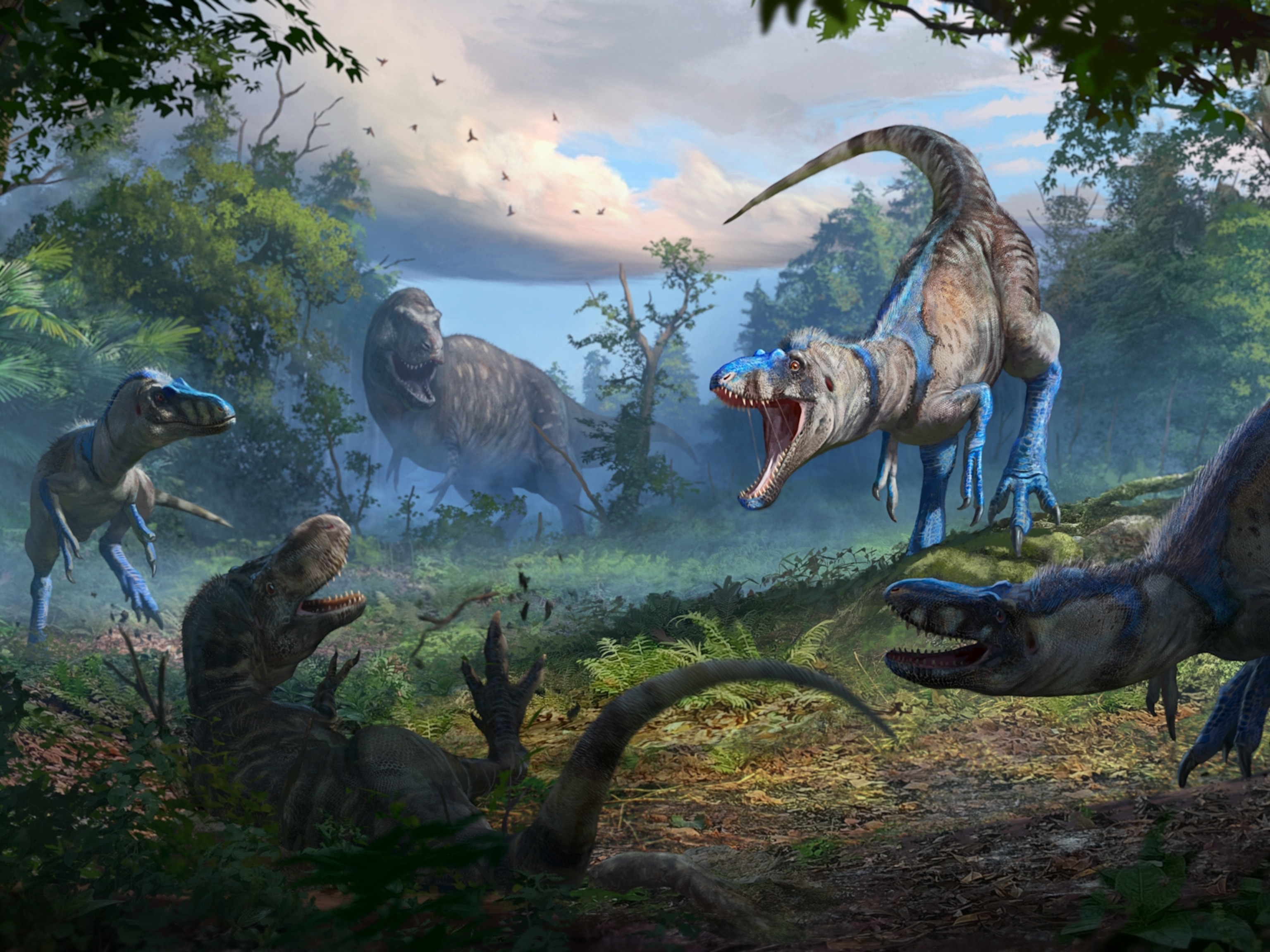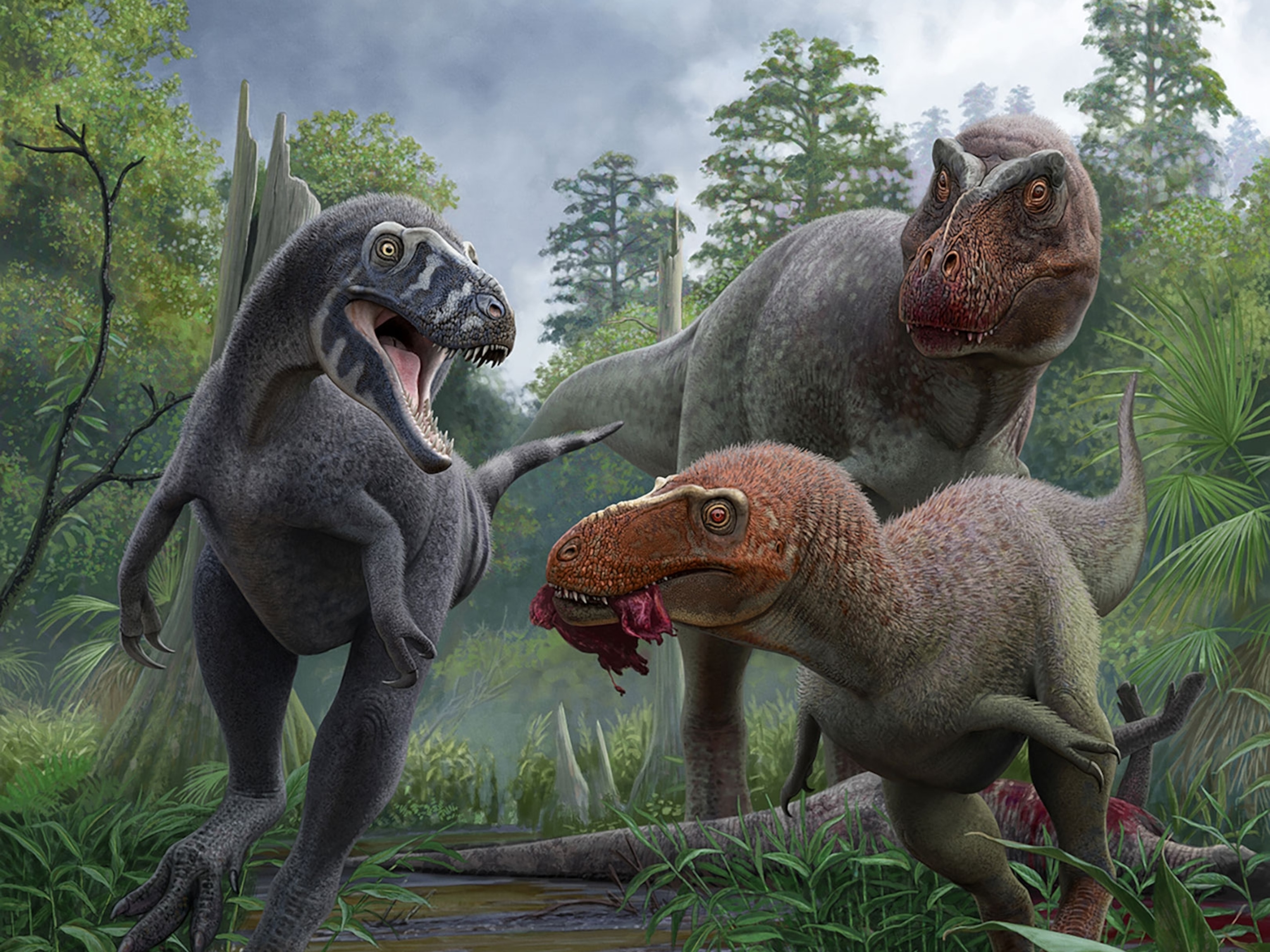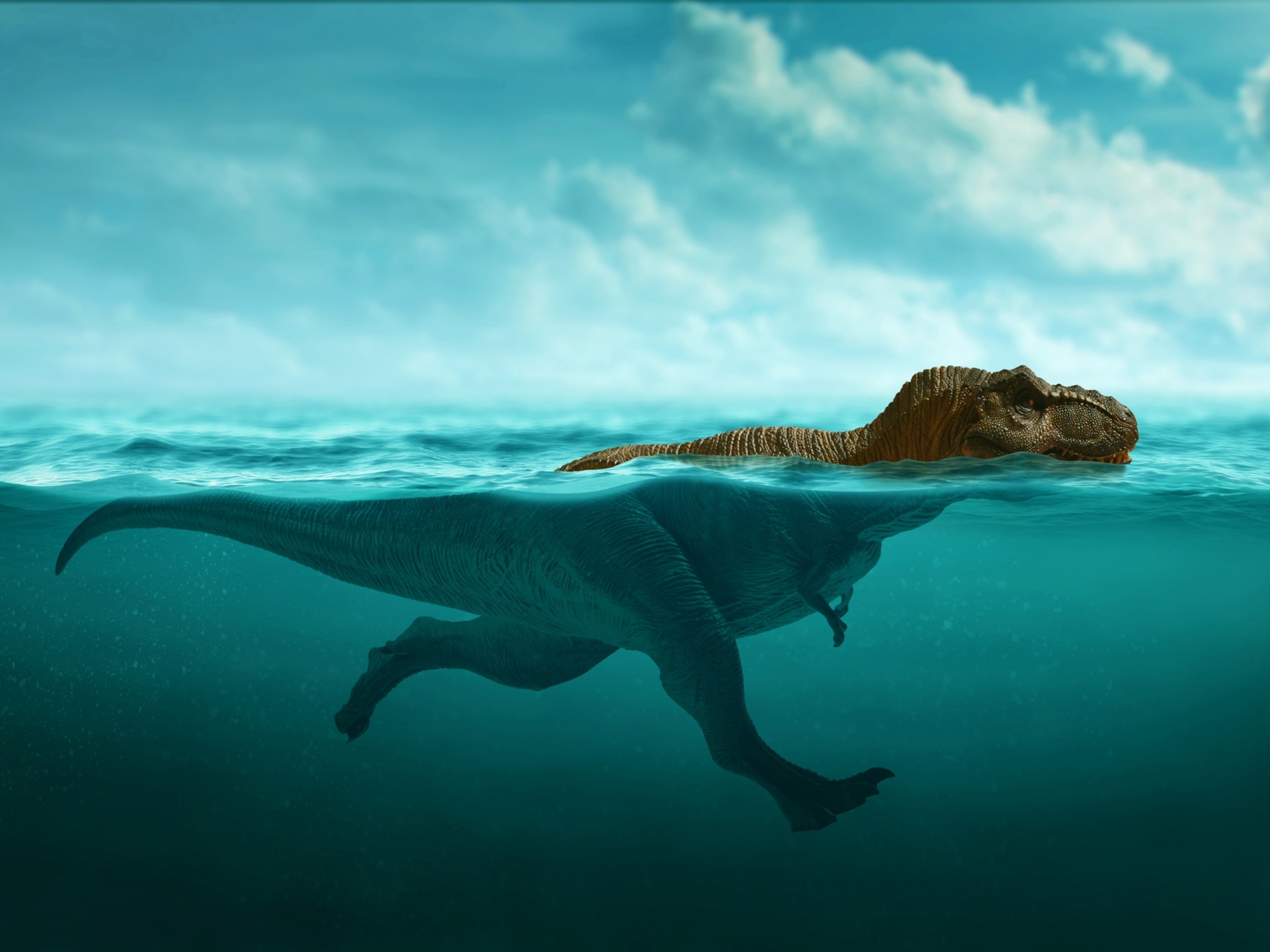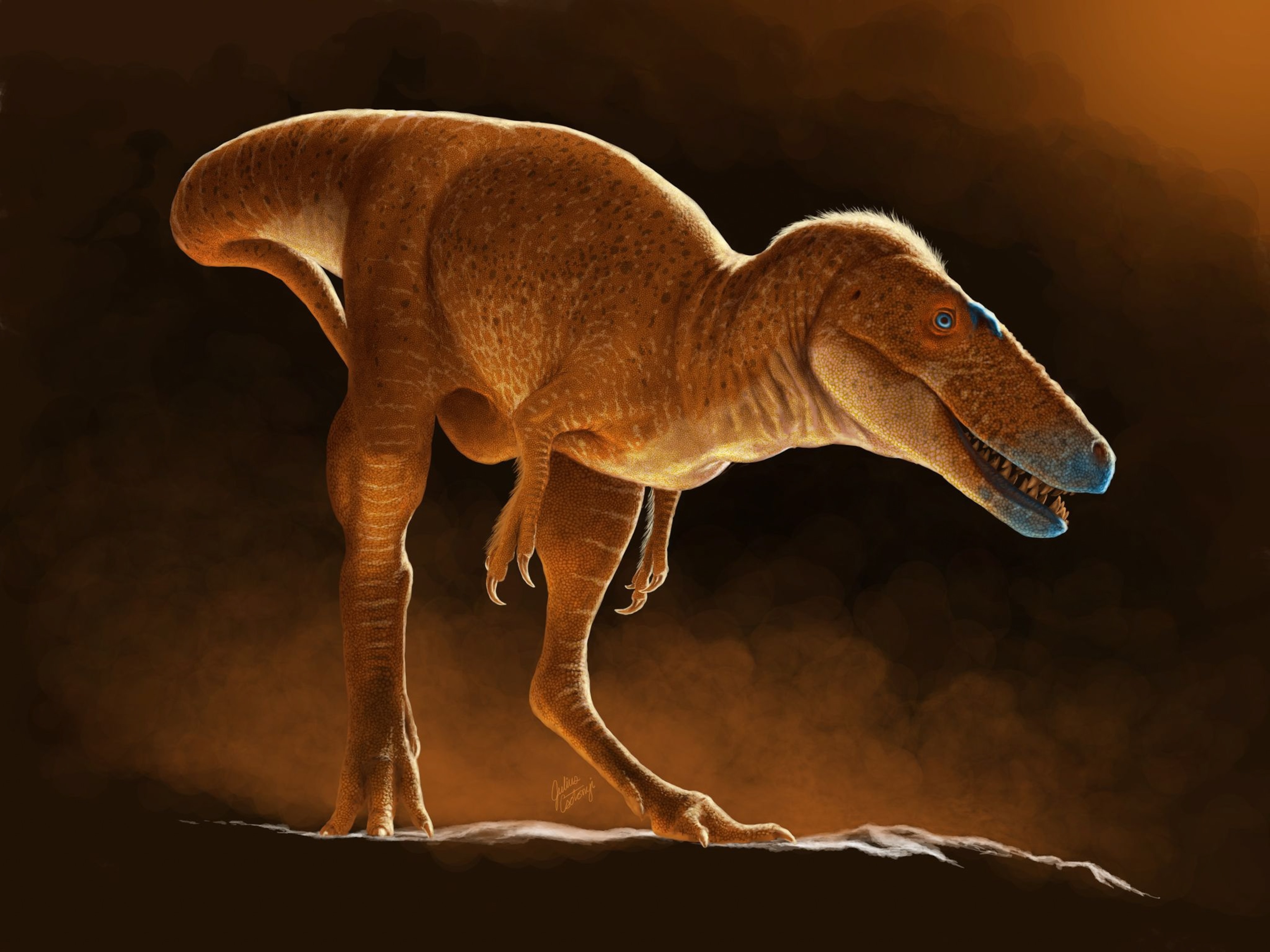
What Was on the T. Rex Menu? Sometimes Each Other
Here's what we know about how the ‘tyrant king’ ate its meals.
What did Tyrannosaurus rex eat? The obvious answer is “Anything it wanted,” but paleontologists have uncovered some surprises in the actual mealtime habits of the Cretaceous carnivore.
The latest find is a set of 66-million-year-old scrapes on a Tyrannosaurus limb bone found in Wyoming, to be presented at the annual Geological Society of America meeting in Baltimore, Maryland on Monday. These scratches were clearly made by a large predator with serrated teeth, and study leader Matthew McLain says that T. rex itself was the only carnivore around at the time capable of creating such damage.
T. rex has been pegged as a cannibal before. In 2010, Nicholas Longrich and colleagues documented four other T. rex bones bearing divots and gouges that could only have been made by members of the same species. T. rex didn’t let good meat go to waste.
Not that the dinosaur solely munched on the remains of its own kind. Thanks to a fossil trail of broken bones and fossil feces, paleontologists have quite a good idea of what was on the T. rex menu.
Chomp, Chomp
Unfortunately—or perhaps fortunately for those who would have to run the experiments—we can’t watch T. rex feed in real time. But through computer modeling and comparing T. rex anatomy to that of modern-day carnivores, paleontologists have been able to determine that T. rex had a bite to match its frightening smile.
In a 2012 study of the bite forces of prehistoric predators, researchers estimated that an adult T. rex could bite with a force up to about 57,000 newtons (12,800 pounds). (Juveniles didn’t even come close, with a wimpy bite of about 4,000 newtons, or 880 pounds.) While not the strongest bite of all time, it appears to have been plenty to dispatch an Edmontosaurus or Triceratops caught unawares.
Fresh Meat
A few of its failed attempts show that the ‘tyrant king’ chased down live prey as a predator, not just a scavenger.
While many T. rex bite marks on fossil bones are “fresh” and appear to have been made during feeding—like those on the cannibalized T. rex bones and multiple Triceratops specimens—there are several Edmontosaurus fossils with healed bite marks along their backs.
One of the injured Edmontosaurus even had the tip of a tyrannosaur tooth embedded inside. While the T. rex went hungry that day, such missteps are evidence that the dinosaur really did try to catch meat on the hoof.
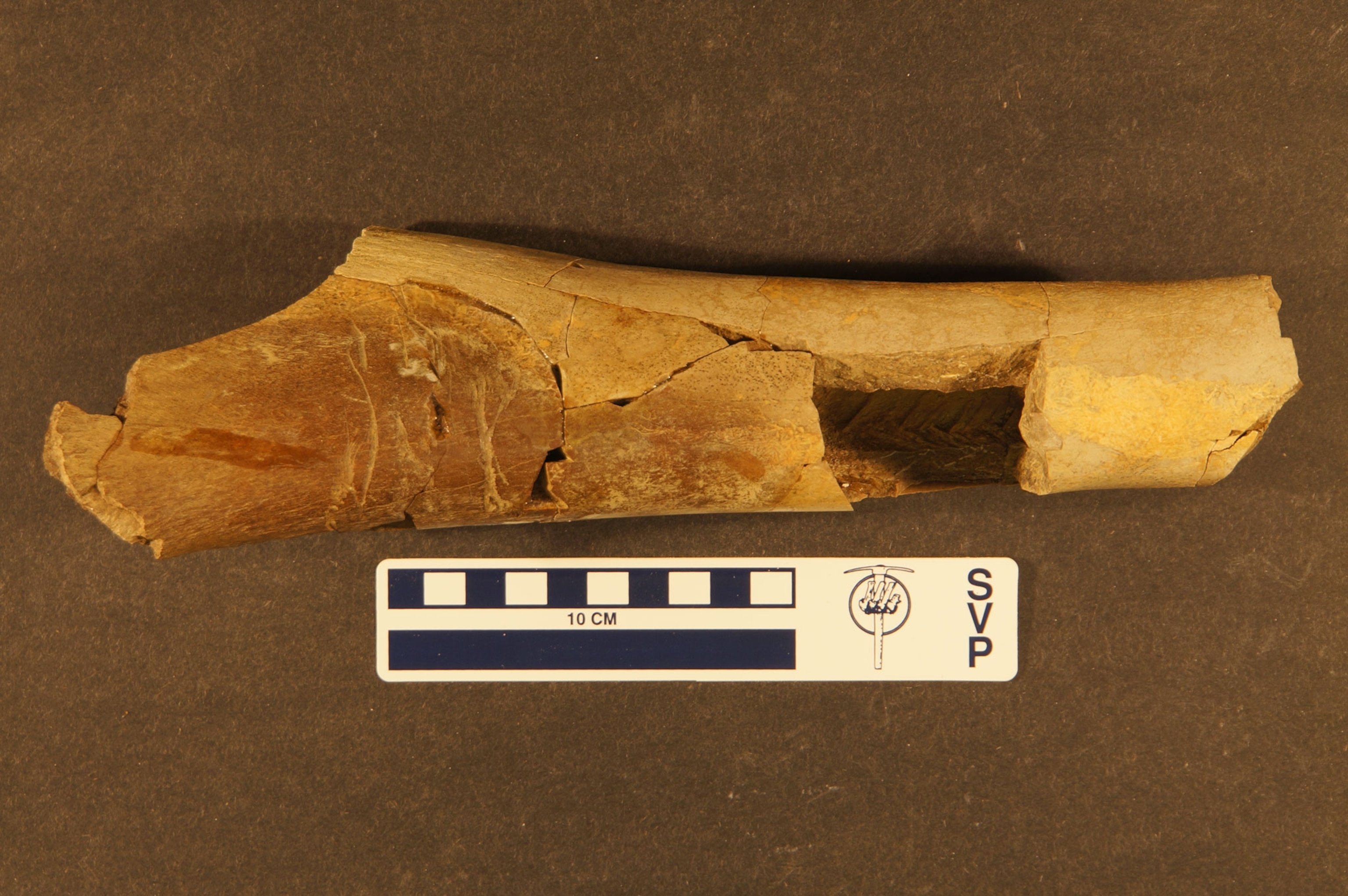
Down the Hatch
Regardless of whether T. rex took down struggling prey or just happened to stumble upon a rotting carcass, though, fossil and experimental evidence suggest that the way the dinosaur fed combined power with precision.
In a 2010 paper, David Hone and Mahito Watabe documented how a close relative of T. rex named Tarbosaurus very delicately took apart a hadrosaur carcass. The predator didn’t just smash through flesh and bones in a gory spectacle. Instead, it intently and carefully used its jaws to strip muscle from bone.
Swallowing those chunks of meat must have been quite a sight, though. With its famously tiny arms, T. rex wasn’t capable of eating hand-to-mouth. Nor could the dinosaur chew.
Instead, T. rex swallowed flesh and bone whole, using its powerful neck muscles to throw its head back to flop meat to the back of its mouth. This is called “inertial feeding,” a behavior shared by birds and crocodiles today, and in a 2007 study scientists estimated that the neck muscles of T. rex were strong enough to toss a 110-pound bolus of flesh 15 feet into the air and catch it.
Out the Other End
Paleontologists even know a little about what happened to the victims of T. rex as they passed through the dinosaur’s digestive system. Along with bite marks, fossil feces—or coprolites—provide direct evidence of what dinosaurs ate and how quickly they digested meals. At least one is known for T. rex.
The fossil scat stretched a foot and a half long (about 45 centimeters), and about a third of its mass was made up of broken bone shards. The petrified poop hinted that T. rex had a relatively fast metabolism and short digestion time, a finding backed up by a geologically older coprolite likely left by another species of tyrannosaur that contained bone fragments and bits of undigested muscle.
T. rex had to eat frequently to survive, and thanks to all these discoveries, we can reconstruct those blood-spattered moments in greater clarity than ever before.
Read Brian Switek's blog Laelaps on NationalGeographic.com. Follow him on Twitter, Facebook, and Instagram.

